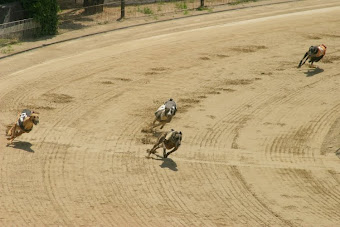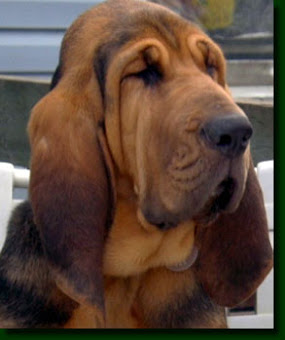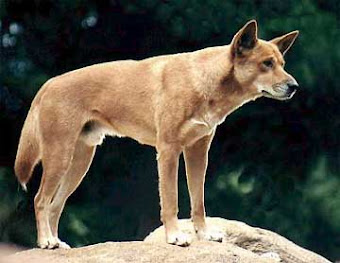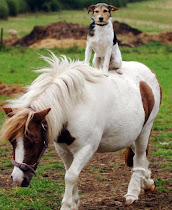 Strange haircut and coloring.
Strange haircut and coloring.
Greyhound
 Greyhounds are known for their speed and agility hence the greyhound bus Co. They are excellent race dogs. They are also good at hunting, sighting, and being watchdogs. Flexible spines that are curved with long sleek bodies. They have dark eyes and small ears that fold back. Greyhounds can run as fast as 40-45 (70 km) miles per hour! They have smooth coats that vary in colors black, white, gray, red, fawn, fallow, brindle, and blue. Short fine coats that are easy to groom combing at least once a week. Rub down it's coat with a chamois cloth to give it an added gleam. Their skin is very sensitive and tears easily so you may want to check with your veterinarian before using flea-killing products on your pet.
Greyhounds are known for their speed and agility hence the greyhound bus Co. They are excellent race dogs. They are also good at hunting, sighting, and being watchdogs. Flexible spines that are curved with long sleek bodies. They have dark eyes and small ears that fold back. Greyhounds can run as fast as 40-45 (70 km) miles per hour! They have smooth coats that vary in colors black, white, gray, red, fawn, fallow, brindle, and blue. Short fine coats that are easy to groom combing at least once a week. Rub down it's coat with a chamois cloth to give it an added gleam. Their skin is very sensitive and tears easily so you may want to check with your veterinarian before using flea-killing products on your pet.Greyhounds are gentle, sensitive, loyal, and brave animals. Great with children and are very obedient. When in public places it's probably a good idea to keep your greyhound on a leash for they are usually tempted to chase things. Easy to train but you do not have to be firm with the greyhound for it to learn. A gentle approach is the best way.
 The best way to feed the greyhound is two small meals a day, rather than one very large meal.
The best way to feed the greyhound is two small meals a day, rather than one very large meal.Greyhounds are usually prone to bloating and are sensitive to drugs and insecticides.
They may also be allergic to certain anesthetics. Greyhounds are one of the few breeds that typically do not suffer from hip dysplasia. The life expectancy is usually about 10-12 years.
This breed most likely descended from the Middle East or Europe and was noted as an excellent hunting dog.
Labels:
allergic,
anesthetics,
bloating,
drugs,
Europe,
Greyhound,
hip dysplasia,
hunting,
insecticides,
Middle East,
race dogs,
sensitive
First Dogs To Survive Orbital Flight
The first living dogs to survive orbital flight Belka ( Squirrel) and Strelka (Little Arrow) along with 40 mice 2 rats and a variety of plant life.
 Korabl-Sputnik-2 (Spaceship Satellite-2) Sputnik 5, was launched on August 19, 1960 by the Russians.
Korabl-Sputnik-2 (Spaceship Satellite-2) Sputnik 5, was launched on August 19, 1960 by the Russians.
Strelka later gave birth to six puppies, one of which was given to Caroline Kennedy, daughter of U.S. President John F. Kennedy, by Soviet premier Nikita Khrushchev.
Mosscow has a museum called the Memorial Museum Of Astronautics were the two dogs are preserved.
 Korabl-Sputnik-2 (Spaceship Satellite-2) Sputnik 5, was launched on August 19, 1960 by the Russians.
Korabl-Sputnik-2 (Spaceship Satellite-2) Sputnik 5, was launched on August 19, 1960 by the Russians.Strelka later gave birth to six puppies, one of which was given to Caroline Kennedy, daughter of U.S. President John F. Kennedy, by Soviet premier Nikita Khrushchev.
Mosscow has a museum called the Memorial Museum Of Astronautics were the two dogs are preserved.
Labels:
Belka,
First Dogs To Survive Orbital Flight,
Strelka
The Cupcake Dog
An instant viral video classic this is the famous cupcake dog... Just look at those big eyes! This dog is possessed!
Labels:
Cupcake Dog,
cute,
Eyes,
Funny,
video
Subscribe to:
Comments (Atom)


















